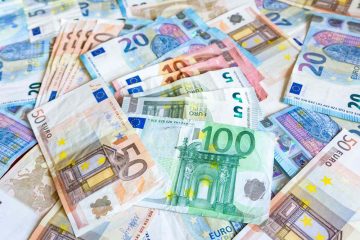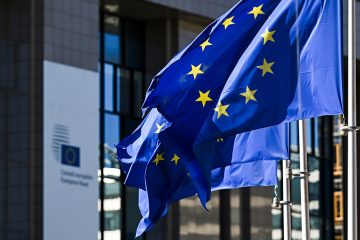GBP to EUR Exchange Rate History: Sterling Resilience Amid European Integration
The GBP to EUR exchange rate is one of the most closely watched currency pairs globally, symbolizing the relationship between the United Kingdom and the Eurozone. While the euro is a politically unified currency, the pound has retained its monetary independence, giving rise to diverging trends influenced by fiscal policies, central bank stances, and key geopolitical events like Brexit.
1999–2008: Euro’s Launch and Early Volatility
The euro was officially introduced in 1999 as an accounting currency, and physical notes and coins began circulation in 2002. During this time:
GBP was not part of the euro system, having opted out of the EMU.
Early on, GBP/ EUR traded around 1.60, as investors tested the credibility of the new currency.
By 2000, the euro had depreciated significantly due to skepticism over its long-term viability.
However, as the European Central Bank (ECB) gained credibility and the eurozone economy grew, the euro began appreciating, pushing GBP/EUR to 1.40 levels by 2004 and even close to 1.30 in 2008.
2008–2012: Global Financial Crisis and Euro Debt Turmoil
The 2008 financial crisis hit the UK hard, triggering a recession and leading to aggressive monetary easing by the Bank of England (BoE). Initially:
However, between 2010 and 2012, the euro faced its sovereign debt crisis, particularly in Greece, Italy, Spain, and Portugal.
This turned sentiment against the euro.
GBP/EUR rebounded back above 1.20 by 2012, as markets questioned the euro’s sustainability.
The ECB’s “whatever it takes” stance in 2012 stabilized the euro but didn’t prevent continued volatility.
2013–2015: Policy Divergence and Temporary GBP Strength
During this period, the UK’s economy began recovering more quickly than the eurozone.
The BoE hinted at tightening, while the ECB moved towards quantitative easing.
GBP/EUR rose to 1.40 by mid-2015, a reflection of diverging monetary policies.
Investors favored the pound as the UK showed stronger employment and GDP growth figures.
This period marked one of the pound’s strongest runs against the euro in over a decade.
2016–2020: Brexit Shock and Renewed GBP Weakness
The June 2016 Brexit referendum was a turning point for the pair.
GBP/EUR collapsed from 1.30 to below 1.10 within weeks.
The prolonged uncertainty of the UK-EU trade deal, combined with domestic political turmoil, kept sterling under pressure.
Meanwhile, the euro benefited from perceived political unity, especially during 2017 when pro-EU parties won major elections in France and the Netherlands.
Despite eurozone challenges, the pound remained range-bound between 1.05 and 1.15, never fully recovering its pre-Brexit levels through 2020.
2021–2024: Post-Brexit Transition and Rate Realignment
As both the UK and EU adapted to the new post-Brexit reality, monetary policy once again became a key driver:
The Bank of England raised interest rates aggressively in response to high UK inflation.
The ECB was slower to act, initially labeling inflation as “transitory.”
This divergence boosted GBP/EUR, pushing it to around 1.17–1.18 in 2022.
However, by 2023 and early 2024:
The ECB also tightened policy, narrowing the interest rate differential.
A stagnating UK economy and softer BoE tone pulled GBP/EUR back toward 1.15 levels.
Markets now perceive both the BoE and ECB as nearing the end of their tightening cycles, bringing policy convergence into focus once again.
✅ Key
🟢 = GBP appreciated vs EUR
❌ = GBP depreciated vs EUR
⚠️ = Sideways / neutral trend
📊 GBP to EUR Exchange Rate by Decade
| Decade | Avg. GBP/EUR Rate (Approx) | Change vs. Previous Decade | Key Drivers |
|---|
| 1999–2008 | 1.60 → 1.30 | ❌ GBP depreciation | Euro adoption, rising ECB credibility |
| 2009–2012 | 1.10 – 1.25 | ⚠️ Sideways | UK crisis recovery vs eurozone debt turmoil |
| 2013–2015 | 1.25 – 1.40 | 🟢 GBP appreciation | UK growth divergence, ECB easing |
| 2016–2020 | 1.05 – 1.15 | ❌ GBP depreciation | Brexit uncertainty, political risk |
| 2021–2024 | 1.12 – 1.18 | ⚠️ Modest recovery | BoE hikes vs eurozone inflation catching up |
The GBP to EUR exchange rate continues to reflect the complex interplay between political risk, economic resilience, and central bank policy. While Brexit remains a long-term drag on UK investment inflows, eurozone challenges like sluggish growth and demographic pressures balance the scale. Traders watch this pair closely for signals on risk appetite, policy divergence, and global capital flows.
GBP/EUR - British Pound / Euro Currency Rate










